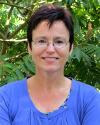ENGL 541
Professor Monika Kaup
Apocalypse Now in the longue durée
The millennial turn saw a burst of new apocalyptic narratives, by mainstream (Margaret Atwood, Cormac McCarthy) and other writers from Europe and North America (Octavia Butler, David Mitchell, Jim Crace, Emily St. John Mandel, Marcel Theroux, Colson Whitehead, Kevin Brockmeier, Paolo Bacigalupi, Omar El Akkad, Chang-Rae Lee, William Gibson, Claire Vaye Watkins, Louise Erdrich, P.D. James, Elfriede Jelinek). Part of a global trend extending beyond the metropolitan West (Carmen Boullosa [Mexico]; Kopenawa [Brazil]; Pepetela [Angola]), this is the most recent of several 20th-century revivals of an ancient narrative tradition of prophetic world-destruction, with roots in both Judaeo-Christian and Muslim as well as non-Western traditions. Responding to the dark side of modernity (colonialism, modern warfare, slavery, the Holocaust, nuclear threat), apocalyptic thinking (“the Doom Boom”) has been a defining trait of the 20th and 21st century culture.
Distinct from Cold War-era apocalyptic fiction focusing on the threat of nuclear annihilation, newer apocalyptic fiction tends to be concerned with “slow apocalypse” due to climate change and environmental degradation. Notable is also a shift from apocalyptic narrative proper to post-apocalyptic fiction. Apocalyptic narratives are narratives of coming world-destruction. Post-apocalyptic narratives are narratives of survival, fictions of world-remaking after the world-end. Apocalypse insists that there is no future. Post-apocalyptic narratives, in contrast, speculate about new beginnings after the end.
Contemporary post-apocalyptic fiction can be classified as speculative fiction rather than fantasy: the future cataclysms pictured are critical explorations of current technological, environmental and political trends. We will emphasize the speculative realism of the genre, discussing contemporary near-future apocalypses as “believable narratives” or “credible fictions” (Catherine Gallagher) that update the novelistic realism invented at the rise of the genre in the 18th century. Contemporary apocalyptic fiction meets the challenge of narrating contemporary history in the age of climate change, which contains the virtual seeds of future developments that won’t be actualized for decades to come. They offer fresh evidence that fiction can function as a higher form of truth-telling: narrative speculation about the possible and the plausible can extend into areas closed to quantitative reasoning and scientific objectivity. This course examines selected 21st-century apocalyptic fiction within a longue durée framework of an ancient narrative tradition of coming world-destruction.
Required primary works:
Book of Revelation (excerpts)
Margaret Atwood, Oryx and Crake
Davi Kopenawa and Bruce Albert, The Falling Sky (excerpts)
Octavia Butler, The Parable of the Sower
Cormac McCarthy, The Road
Marcel Theroux, Far North
Written Assignments: 10-12 pp. research paper.
